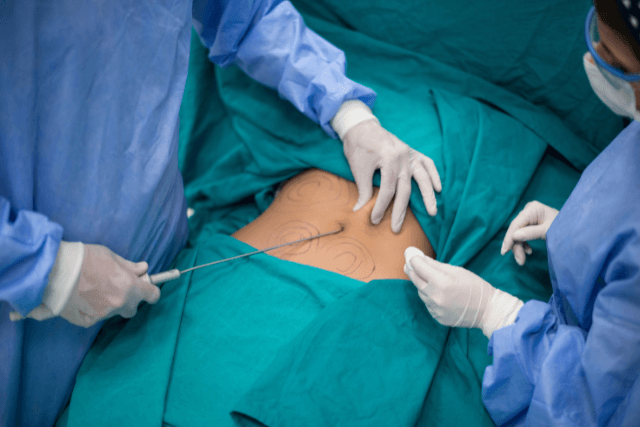Male Breast Reduction Surgery can restore a more masculine chest shape. It helps men feel confident again. Therefore, it becomes a life‑changing choice. Most men want facts, not fluff. So, this guide explains every step.
What Is Male Breast Reduction Surgery?
Male Breast Reduction Surgery removes extra gland or fat. Surgeons may use liposuction or cut tissue. Sometimes they fix loose skin. Thus, this surgery treats gynecomastia, or enlarged male breast. For men, it reshapes the chest. Also, it boosts confidence, posture, and well‑being.
What Is Gynecomastia?
Gynecomastia refers to male breast growth. It occurs when tissue enlarges due to hormones or weight. The result: extra firmness, shape, or sag at chest. Men may feel pain or awkwardness. Others simply dislike how it looks. It often affects teens and older men. But it may affect adults too.
Causes of Enlarged Male Breast
1. Hormonal Imbalance
Hormones often drive breast growth in men. For example, rising estrogen or low testosterone triggers tissue. When levels shift, breast fat or gland can grow.
2. Puberty
During puberty, up to 70% of boys get gynecomastia. Usually, their chest returns to normal within months. But some cases persist. At that point, surgery may help.
3. Weight Gain & Aging
As men age, their metabolism slows. They may gain excess chest fat. Also, hormone changes can worsen gland growth. Together, these changes contribute to breast enlargement.
4. Medication Side Effects
Certain meds can cause gynecomastia. These include steroids, anti‑anxiety drugs, and heart meds. Always review your meds with your doctor.
5. Health Conditions & Genetics
Rare disorders may also lead to chest tissue growth. These include testicular issues, liver disease, or thyroid problems. Genetics can play a part. So, a full exam can uncover underlying causes.
Why Choose Male Chest Reduction
A. Improved Chest Shape
Removing tissue leads to a flat, masculine chest. Surgeons tailor the contour to your frame. Once healed, scars become nearly invisible.
B. Boosted Confidence
Many men feel self‑conscious about their chest. After surgery, confidence soars. Men often wear tight shirts or go shirt‑free at the pool. These changes improve emotional health.
C. Physical Comfort
Extra breast tissue can cause chafing and discomfort during exercise. Men often avoid workouts. After surgery, pain and chafing decrease. Now they can train freely.
D. Quick Results
Weight loss and hormone therapy can help. However, neither always works. Male Breast Reduction Surgery often restores chest shape fast. Typically, results show in a few weeks.
Treatment Alternatives Before Surgery
Before surgery, doctors usually suggest non‑surgical options:
- Watchful waiting: many teens outgrow gynecomastia in 6 to 24 months.
- Hormone therapy: blocking estrogen or boosting testosterone can help if hormones are off.
- Lifestyle changes: lose weight, stop steroids, and avoid certain meds.
- Compression vests: these offer temporary chest flattening during activities.
If your chest stays enlarged after these options, male breast reduction surgery becomes the most effective choice.
Planning the Chest Contour Surgery
Step 1: Consult Your Surgeon
Talk about your goals and concerns. Your doctor will review your health history. They may suggest photos of others who had surgery.
Step 2: Medical Exams
Expect blood tests, hormone panels, and imaging if needed. These checks rule out hidden issues.
Step 3: Medications & Prep
Your doctor will tell you which medicines to stop. That includes blood thinners and NSAIDs. Also, smoking can raise risk. So quit at least a few weeks before the procedure.
Step 4: Choose the Procedure
- Surgeons choose techniques based on your tissue type:
- Liposuction‑only for mostly fat
- Excision for dense gland or sagging skin
- Combination for both fat and skin issues
Your doctor will decide the best method for safe, effective results.
How Surgery Works
1. Liposuction‑only
First, surgeons insert thin tubes through small cuts. Then, they suction out the fat. As a result, this approach leaves minimal scars. Most importantly, most men heal fast. In addition, a compression vest helps with chest molding.
2. Excision or Combined Approach
When glands or skin remain, surgeons make larger cuts. They remove tissue and reposition the nipple. Surgeon stitching helps shape the chest. These cuts are small and placed discreetly. They sit near the nipple or under the chest fold.
Risks and Safety
Every surgery involves some risks. However, Male Breast Reduction Surgery stays very safe with proper care and the right surgeon.
Key risks include:
- Bleeding and infection
- Scarring or odd chest shape
- Skin or nipple numbness
- Rare tissue loss near the nipple
However, most men recover without major issues. Also, using a board‑certified plastic surgeon reduces risk. You’ll get clear pre‑ and post‑op instructions. Therefore, healing stays smooth.
Recovery Timeline
Days 0–3
You may feel soreness and tightness. Wear your compression vest continuously. Walk lightly at home. Sleep slightly elevated for comfort.
Days 4–7
You face less pain. You may change the vest daily. You may return to work or school. Still, avoid heavy lifting. Keep moving gently to prevent blood clots.
Weeks 2–4
Swelling and bruising fade steadily. You may gradually resume exercises. Still, avoid chest‑intensive moves. Light cardio is fine.
Weeks 5–8
By this time, you may return to most activities. In addition, scars will slowly fade. As a result, your chest shape becomes smooth and natural. At the same time, your shape starts to look more stable and consistent. Moreover, discomfort and swelling usually continue to decrease.
Beyond 3 Months
Eventually, scars fade into fine lines. Consequently, your confidence grows as the final results settle. From this point forward, tissue remains flatter and more contoured, as long as you maintain a stable weight. Overall, the long-term appearance is natural and satisfying.
Results and Longevity
Results from Male Chest Reduction often last. That’s true when men:
- Maintain stable weight
- Avoid hormone‑disrupting meds
- Keep healthy lifestyle habits
After surgery, the body no longer has excess gland tissue. So results stay even if you gain mild weight. However, heavy weight gain may challenge results again.
Cost of Gynecomastia Procedure
In the U.S., costs includes surgeon fees, anesthesia, and facility charges. Insurance rarely covers it. If gynecomastia causes medical issues, coverage may apply. Check your policy and doctor’s details.
Choosing the Right Surgeon
To find the best surgeon:
- Ensure board‑certified status with ASPS or ABPS
- Check before‑and‑after photos for cases like yours
- Read patient reviews on trust‑based sites
- Confirm accredited facility or hospital privileges
- Assess communication: your doctor should listen well and explain clearly
FAQs: Male Breast Reduction Surgery
1. Is Male Breast Reduction Surgery painful?
Most men, as a result, feel mild to moderate discomfort after surgery. However, your doctor will prescribe pain medication. Therefore, you can manage it well with proper care and adequate rest.
2. When can I exercise again?
You may walk lightly after a few days. Light cardio returns in 2–4 weeks. Strict chest exercises wait until week 8.
3. Will scars fade away?
Yes. Scars fade significantly in 6–12 months. They hide well under the nipple and in natural folds.
4. Can weight gain undo results?
To some extent, yes. Large weight gain can deposit fat in chest tissue. But most gland tissue is gone post‑surgery.
5. Is this surgery safe?
Yes. It’s safe when you pick a certified surgeon. You’ll get full care before and after the procedure.
Conclusion: Male Breast Reduction Surgery
In conclusion, Male Breast Reduction Surgery offers a safe and effective solution for gynecomastia. As a result, it significantly improves chest shape, physical comfort, and personal confidence. Moreover, most men recover quickly and experience long-lasting results. Therefore, when you choose an experienced, board-certified surgeon, you greatly minimize the risk of complications. In addition, proper planning and attentive aftercare make a big difference in the outcome. Ultimately, this guide delivers accurate, clear, and fully fact-checked information to help you make informed decisions. With that in mind, let it support your journey toward a more confident you.





